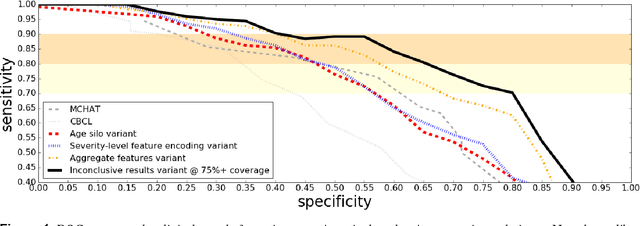Halim Abbas
Project Rosetta: A Childhood Social, Emotional, and Behavioral Developmental Ontology
Dec 06, 2018



Abstract:There is a wide array of existing instruments used to assess childhood behavior and development for the evaluation of social, emotional and behavioral disorders. Many of these instruments either focus on one diagnostic category or encompass a broad set of childhood behaviors. We built an extensive ontology of the questions associated with key features that have diagnostic relevance for child behavioral conditions, such as Autism Spectrum Disorder (ASD), attention-deficit/hyperactivity disorder (ADHD), and anxiety, by incorporating a subset of existing child behavioral instruments and categorizing each question into clinical domains. Each existing question and set of question responses were then mapped to a new unique Rosetta question and set of answer codes encompassing the semantic meaning and identified concept(s) of as many existing questions as possible. This resulted in 1274 existing instrument questions mapping to 209 Rosetta questions creating a minimal set of questions that are comprehensive of each topic and subtopic. This resulting ontology can be used to create more concise instruments across various ages and conditions, as well as create more robust overlapping datasets for both clinical and research use.
Machine learning approach for early detection of autism by combining questionnaire and home video screening
Mar 15, 2017



Abstract:Existing screening tools for early detection of autism are expensive, cumbersome, time-intensive, and sometimes fall short in predictive value. In this work, we apply Machine Learning (ML) to gold standard clinical data obtained across thousands of children at risk for autism spectrum disorders to create a low-cost, quick, and easy to apply autism screening tool that performs as well or better than most widely used standardized instruments. This new tool combines two screening methods into a single assessment, one based on short, structured parent-report questionnaires and the other on tagging key behaviors from short, semi-structured home videos of children. To overcome the scarcity, sparsity, and imbalance of training data, we apply creative feature selection, feature engineering, and novel feature encoding techniques. We allow for inconclusive determination where appropriate in order to boost screening accuracy when conclusive. We demonstrate a significant accuracy improvement over standard screening tools in a clinical study sample of 162 children.
 Add to Chrome
Add to Chrome Add to Firefox
Add to Firefox Add to Edge
Add to Edge